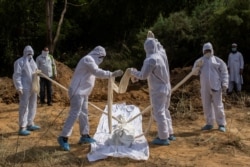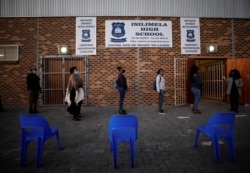Developing countries now account for three-quarters of the 100,000 daily new coronavirus cases that authorities around the world are reporting. The steady rise is alarming, according to the World Health Organization, as many epidemiologists say they think the figures are being underreported.
While the numbers are increasing, governments in developing countries say they have had little choice but to relax what restrictions they put in place because otherwise they would face financial ruin. India lifted its lockdown the same day it saw a record rise in infections.
Analysts say we could see horrifying scenes like those witnessed in Guayaquil, Ecuador, where the fragile health care system was quickly overwhelmed and bodies were abandoned in the streets. With the pandemic just beginning in many developing nations, the WHO and other international groups are sounding increasingly anxious about the human tragedy they fear will unfold.
Developing and middle-income countries in Africa, Asia and Latin America are likely months from their peaks, health officials fear. They warn they are ill-equipped to cope; their health care infrastructure is already inadequate, and they have fewer resources to contain and suppress COVID-19, the disease caused by the coronavirus.
The pandemic’s “most devastating and destabilizing effects will be felt in the world's poorest countries,” Mark Lowcock, U.N. undersecretary-general for humanitarian affairs, said recently. He warned of “the specter of multiple famines.”
Several leaders in developing nations are pinning their hopes on the youthfulness of their populations. They note the lower death tally and less serious health consequences from the virus among the young in Western and developed countries. But younger people in developed countries are better nourished, and some health officials say that poor nutrition could well change the picture in Africa especially.
A study by The Washington Post last month found that younger people were dying at unprecedented rates from COVID-19 in developing countries when compared with figures in advanced nations. In its trawl of the data, the newspaper found that in Brazil, people under 50 were accounting for 5 percent of coronavirus-linked deaths, 10 times greater than in Italy or Spain. In Mexico, around one-fourth of the dead were between 25 and 49.
With testing nonexistent in many African nations, the picture is much murkier. Charlotte Watts, chief scientific adviser for Britain’s Department of International Development, said, “We are concerned now about the likely wave that’s going to spread across sub-Saharan Africa.”
The problem facing African states and other poorer nations is that lockdowns kill more people than they save. A study by Johns Hopkins University in Baltimore, Maryland, suggested that an additional 1.2 million children could die of hunger if lockdowns lasted more than six months. And the London School of Hygiene and Tropical Medicine warned that pandemic disruption to general vaccination programs in Africa could lead to 140 lives lost for every coronavirus death.
The rate of new infections is accelerating quickly. The official tally of cases on the 54-nation continent now stands at 216,446 with 5,756 fatalities.
“It took 98 days to reach the first 100,000 cases, and only 18 days to move to 200,000 cases,” Matshidiso Moeti, the WHO’s regional director for Africa, said Thursday in a video briefing from Geneva, Switzerland. “Even though these cases in Africa account for less than 3 percent of the global total, it’s clear that the pandemic is accelerating. For now, Africa still only accounts for a small fraction of cases worldwide. But the pace of the spread is quickening.”
According to the WHO, the continent has witnessed a 31 percent increase in the number of confirmed cases in the last week. Officials said the fastest pickup was being seen in Mauritania, Ethiopia, the Central African Republic, South Sudan and Zimbabwe. South Africa, Nigeria, Algeria, Egypt, Ghana, Cameroon, Senegal, the Democratic Republic of the Congo, Guinea and Ivory Coast account for nearly 80 percent of all cases. Last month, hundreds of factory workers at a fish-processing plant in Ghana — all 533 of them — contracted the virus from one worker at the factory in the port city of Tema.
A surge in coronavirus cases in the Middle East has forced authorities in some countries to impose new lockdowns after they initially had eased restrictions.










